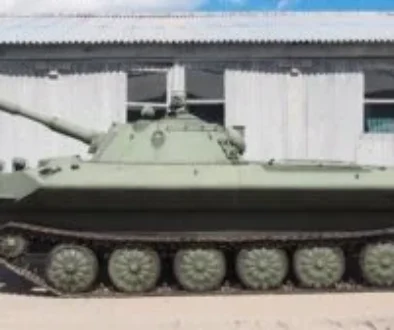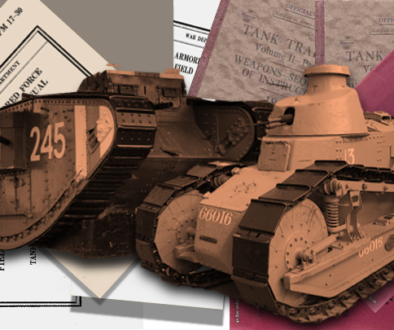British Bomb Disposal Techniques for Disarming Luftwaffe 500 kg Bombs
During World War II, the Luftwaffe’s bombing campaigns posed a significant threat to Britain. Among the most feared were the 500 kg bombs, which were used extensively during the Blitz. The British Army’s bomb disposal units developed and employed a range of techniques to safely disarm these bombs, ensuring the safety of civilians and the continuity of wartime operations. We explore the methods, innovations and the men, crucial in disarming these formidable weapons.
The Threat of the 500 kg Bombs
The 500 kg bombs, commonly known as SC 500, were high-explosive bombs designed to cause maximum destruction. These bombs were equipped with various types of fuses, including time-delay and anti-handling devices, which complicated the disarming process. The time-delay fuses could detonate hours or days after impact, making them particularly dangerous.
Initial Approach to Bomb Disposal
When a 500 kg bomb was discovered, the first step was to secure the area and evacuate civilians to prevent casualties in case of detonation. The bomb disposal teams, part of the Royal Engineers, then moved in to assess the situation. Early in the war, the methods were rudimentary and based on trial and error, but as the conflict progressed, more systematic techniques were developed.
Key Initial Steps:
Identification: Determine the type of bomb and its fuse mechanism. This was often done visually but required careful inspection, sometimes using mirrors to look around corners to avoid triggering anti-handling devices.
Stabilization: Prevent the bomb from moving or shifting, which could activate the fuse. Sandbags or other stabilizing materials were used to keep the bomb steady.
Defusing Techniques
-
Fuse Removal:
One of the primary methods for rendering the bomb safe was to remove the fuse. This required intricate knowledge of the bomb’s design and the specific type of fuse used. For example:
Clockwork Time-Delay Fuses: These were mechanical fuses set to detonate after a predetermined time. Engineers used special tools to unscrew the fuse from the bomb casing, often after carefully cutting around it to prevent detonation.
Chemical Delay Fuses: These fuses relied on chemical reactions to delay detonation. Bomb disposal personnel developed techniques to neutralize the chemicals by injecting substances that would inhibit the reaction, such as solvents or water.
-
Disarming Anti-Handling Devices:
Some 500 kg bombs were equipped with anti-handling devices designed to detonate if the bomb was tampered with. Disarming these required extreme caution. Techniques included:
Freeze and Heat: In some cases, anti-handling devices could be rendered inactive by extreme cold or heat. Liquid nitrogen was used to freeze the components, preventing the mechanism from functioning.
Drilling and Pinning: Carefully drilling into the bomb to insert pins or other devices to hold moving parts in place, thus preventing detonation.
Advanced Techniques and Tools
As the war progressed, the British bomb disposal teams developed more advanced techniques and tools to increase their effectiveness and safety.
-
The “Stevenson” Probe:
This was a long, flexible probe designed to be inserted into the fuse pocket of the bomb. It allowed engineers to feel the internal components and understand the type of fuse mechanism without direct visual inspection, reducing the risk of triggering the bomb.
-
X-ray Equipment:
Portable X-ray machines were used to get a detailed look at the internal structure of the bomb and its fuse. This non-invasive method provided crucial information, allowing bomb disposal teams to devise the safest approach to disarming the device.
-
Remote Handling:
As technology improved, remote handling tools were developed. These included long-handled tools and robotic devices that allowed bomb disposal personnel to manipulate the bomb and its components from a safe distance.
-
The “Putter” Tool:
Developed by Major John Putter, this tool was used to safely unscrew fuses. It provided a steady, controlled rotation to remove the fuse without triggering the anti-handling mechanisms.

Notable Operations and Personnel
The success of these techniques was due in large part to the bravery and ingenuity of the bomb disposal officers. Some notable figures include:
-
Lieutenant Robert Davies:
Awarded the George Cross for his heroic actions in disarming an unexploded bomb lodged in the walls of St. Paul’s Cathedral in 1940. His meticulous work in dangerous conditions prevented what could have been a catastrophic explosion.
-
Major Sir Vivian Dering Majendie:
A pioneer in bomb disposal, Major Majendie developed many of the early techniques and training programs for bomb disposal personnel. His contributions laid the groundwork for future innovations.
-
Sergeant James O’Grady:
Known for his expertise in handling the most dangerous bombs, Sergeant O’Grady’s meticulous approach and calm demeanour under pressure saved countless lives. He was instrumental in developing and refining many of the techniques used by bomb disposal teams.
Post-War Impact and Legacy
The techniques developed during World War II for disarming 500 kg bombs had a lasting impact on bomb disposal practices. The lessons learned and the technologies developed laid the foundation for modern explosive ordnance disposal (EOD) operations. After the war, these methods were further refined and adapted to deal with a wide range of unexploded ordnance from various conflicts.
Training and International Cooperation:
The experience gained during the war led to the establishment of specialized training programs for bomb disposal personnel. The British Army shared their expertise with allied nations, contributing to a global improvement in EOD capabilities.
Technological Advancements:
The post-war period saw continued innovation in bomb disposal technology. Remote-controlled robots, advanced detection equipment, and sophisticated disarming techniques became standard tools for EOD teams worldwide.
Recognition and Memorials:
The bravery and sacrifices of bomb disposal personnel during World War II are remembered and honoured through various memorials and awards. Their legacy lives on in the continued efforts of modern bomb disposal units to protect lives and ensure safety in conflict zones and civilian areas.
Disarming the Luftwaffe’s 500 kg bombs during World War II required a combination of bravery, skill, and innovation. The techniques developed by British bomb disposal personnel were a testament to their dedication and ingenuity. These methods not only saved countless lives during the war but also laid the groundwork for modern EOD practices. The legacy of these brave individuals continues to inspire and inform bomb disposal efforts around the world, ensuring that their contributions to safety and security are never forgotten.


A SC 1000 with a personalized message for Mr. Churchill in Belgium 1940. Courtesy: Wikipedia and the Bundesarchiv, Bild 101I-342-0615-18 / Spieth / CC-BY-SA 3.0



